Car accidents can abruptly shift an individual’s life from stability to uncertainty, often leading to ongoing physical discomfort. Chiropractic care has become an essential element in the recovery process from personal injuries, fostering wellness and health improvement. Yet, understanding and navigating the intricacies of insurance coverage for these crucial treatments can often be challenging.
This article aims to provide clear and authoritative guidance, offering necessary steps to ensure your insurance plan accommodates your chiropractic care needs. Armed with this information, you can focus on what truly matters—improving your health and well-being.
Why Understanding Insurance Processes Is Crucial
Understanding your insurance policy is crucial for ensuring financial security and making informed decisions regarding your coverage needs. Being well-informed about policy details, such as deductibles and coverage limits, empowers you to effectively manage healthcare costs and maximize the benefits of your insurance.
Types Of Insurance Coverage
- Health Insurance: Health insurance provides financial protection against the high costs of medical care. It typically covers expenses such as doctor visits, hospital stays, surgeries, and prescription medications, ensuring you have access to necessary healthcare services without facing overwhelming medical bills.
- Personal Injury Protection (PIP): PIP is a type of auto insurance that covers medical expenses and lost wages for you and your passengers after an accident, regardless of who was at fault. It offers peace of mind by ensuring immediate medical care and financial support during recovery from injuries sustained in a car accident.
- Workers’ Compensation: This insurance provides benefits to employees who are injured or become ill due to their job. It covers medical expenses, rehabilitation costs, and lost wages, helping to support workers during their recovery and protecting employers from legal liability.
Key Policy Terms
- Deductibles, Copayments, and Coverage Limits: Deductibles are the initial out-of-pocket expenses before insurance kicks in. Copayments are fixed fees for specific services. Coverage limits cap the insurer’s payment, affecting your out-of-pocket costs.
- In-network vs. Out-of-network Providers: In-network providers offer services at lower rates due to agreements with your insurer, reducing costs. Out-of-network providers lack these agreements, leading to higher expenses for you.
Verify insurance coverage details with your provider to prevent misunderstandings and ensure you receive your entitled benefits. Policies can vary, and even small differences can affect your coverage significantly. Contact your insurance representative to confirm eligible providers, treatment limits, and procedural requirements. This ensures you receive the necessary care while effectively managing insurance claims. For further guidance, visit healthcare.gov. Always keep in touch with your provider for the most accurate policy information.
Documenting Your Injury And Treatment
Thorough documentation of injuries and treatments is vital for successful insurance claims, ensuring that individuals receive the benefits and reimbursement they deserve. Proper records enhance the credibility of claims and facilitate seamless processing by insurance companies.
Essential Details To Include
- Car Accident Details: Record the date, time, location, and circumstances to establish a clear timeline for medical and insurance purposes.
- Nature of Injuries: Describe injury severity and symptoms to aid medical professionals in tailoring effective treatment plans.
- Medical Consultations and Treatments: Maintain a record of consultations, dates, providers, and treatments for continuity of care and insurance support.
- Prescribed Medications: List medications, dosages, instructions, and changes to prevent interactions and manage health optimally.
- Chiropractic Visits: Document treatments, progress, and symptom changes to support wellness and track improvements.
Step-By-Step Guide To Filing A Claim
Filing an insurance claim can be a straightforward process when approached with careful preparation and a focus on your health and wellness journey.
- Step 1: Gather Essential Documentation: Begin by collecting all necessary documents related to your claim, including medical reports, treatment records, and any other relevant paperwork that supports the details of your injury and recovery.
- Step 2: Contact Your Insurance Provider: Reach out to your insurance provider promptly to inform them about your claim. This step ensures you understand the specific process and requirements for your policy.
- Step 3: Complete Claim Forms: Accurately fill out the required claim forms provided by your insurance company, ensuring that all details are consistent with your collected documentation to avoid delays in processing.
- Step 4: Submit the Claim: Submit your completed claim forms and supporting documentation to your insurance provider using the designated submission method, whether it be online, by mail, or in person.
- Step 5: Follow Up on Claim Status: Regularly check the status of your claim with your insurance provider, remaining proactive to address any additional information requests or clarifications needed for processing.
Common Challenges And How To Overcome Them
Navigating the insurance claims process can often present several obstacles that may impede the successful resolution of your case. Understanding these challenges and knowing how to address them effectively is crucial to ensuring a smooth experience.
Denied Claims and Coverage Limitations
Claims may be denied, or coverage might not be as comprehensive as expected, often due to misunderstandings of policy terms or lack of proper documentation. It’s crucial to understand your policy thoroughly and submit complete documentation.
Engaging a Distracted Driving Accident Lawyer
Partnering with a distracted driving accident lawyer can be invaluable. Their expertise in personal injury law helps them interpret policy details and advocate effectively on your behalf.
Negotiating with Insurers
Lawyers are skilled negotiators who can secure fair compensation from insurers. They understand the strategies insurers use to minimize payouts and can counter these with strong evidence and arguments.
Resolving Disputes and Misunderstandings
When issues arise, a lawyer can provide strategies to resolve disputes, ensuring all communications with insurers are clear and consistent to prevent further complications.
Gathering Comprehensive Evidence
Effective evidence-gathering is critical. Lawyers work with medical professionals to compile detailed records and expert testimonies to support your claim.
Successfully managing the complexities of insurance claims requires both awareness and strategic action. By proactively understanding your policy and enlisting professional help when necessary, you can effectively overcome challenges and secure the best possible outcome.
Securing Chiropractic Insurance Post-Injury
Securing insurance coverage for chiropractic treatment after a personal injury requires strategic collaboration between you, your chiropractor, and your healthcare provider. Initiate clear communication to ensure your healthcare team is fully informed about your insurance policy, facilitating their assistance in navigating claims and providing essential evidence for coverage approval. Promptly seek medical attention, whether visiting an emergency room, urgent care, or consulting your primary care doctor. Depending on the injury, chiropractic care may be recommended as part of your recovery plan. After treatment, compile all relevant documentation to support your claim, ensuring a streamlined process and maximizing your insurance benefits.
Arrange Your Chiropractic Visit Now!
Don’t hesitate to seek the assistance you need—contact your chiropractor today to ensure your insurance covers the necessary treatments following a personal injury. At The Healing Joint, our experts specialize in navigating insurance claims to make sure you receive the full benefits for your recovery. Take the essential step towards a pain-free life by choosing a chiropractor who understands both your health needs and insurance intricacies. Your comprehensive recovery journey is just a call away.




